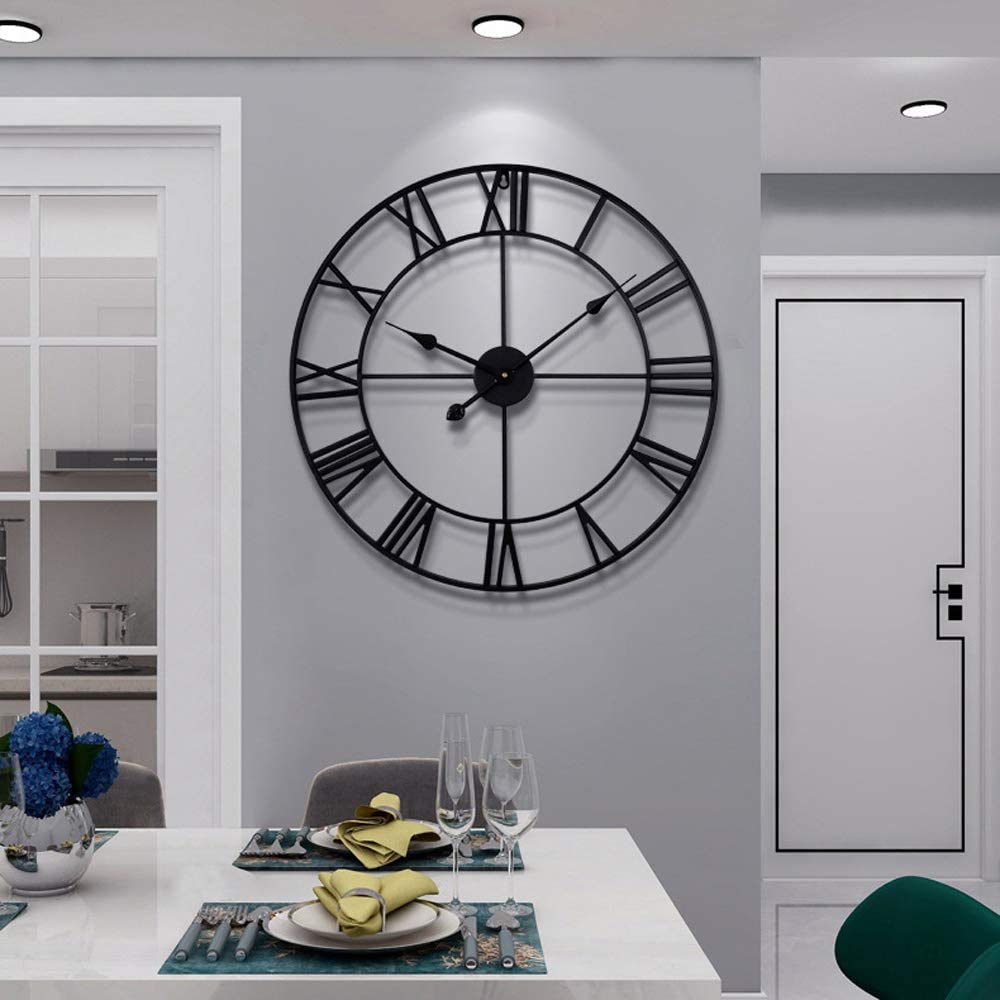The history of keeping track of time is nearly as old as civilisation, starting with sundials, hourglasses, grandfather clocks, and atomic clocks. Pendulum clocks were created for the first time in 1656, but the earliest mechanical clocks date to around the year 1300. Considered a sign of prestige, accurate clocks had by this point started to be produced in greater quantities. They were frequently on display in a special spot, such as on a mantle.
Since then, many people have continued to display clocks prominently around their homes. Grandfather clocks and other similar clocks can even be considered pieces of furniture that are frequently placed in a place of honour in the home. We hang clocks on the walls of our living rooms, dens, bedrooms, and offices.
When chosen right, clocks can fit in seamlessly in almost any space. So, let’s help you find the perfect ones for upgrading your home’s interior.
Pick Out a Style
It is amazing how many different clock designs there are today. Those early clock enthusiasts from the 17th century couldn’t believe what they saw! Since those first clocks from the 17th century, there have been clocks put on teapots, clocks fixed on hooks, clocks set in square shapes, and clocks that mirror practically every modern design scheme.
Consider your room and its décor style while looking for clocks. It makes sense to select a model that will work well with your decor or complement it.

- Contemporary décor – Pick something you like from the range of trendy clocks with a metallic frame in a colour that matches the interior décor. The clock’s face can be covered in intricate embellishments that complete the appearance. In fact, this wall clock design works well in industrial settings as well.
- Traditional/vintage décor – A wall clock that uses Roman numerals as the hour symbols enhances the overall style of your space whether it is more classic or minimalist.
A large ornate kind of clock would truly match your space well if you’re going for a more opulent degree of ambience, as in sitting rooms or formal living areas. In these cases, a clock may serve more as a decorative accent than a device to keep track of time. For the greatest impact, look at clocks with textured, patterned, or coloured faces.
Size It Right
Before going shopping, you might want to take some measurements of the room if you’re unsure of its size. This will serve as a good beginning point for the range you should take into account. Choosing a large centrepiece for a tiny area where you plan to place your new clock is usually not the greatest move.
Usually, a smaller clock will look the best in a smaller space. But also consider size in relation to the location of your clock. A more practical approach is to use a larger clock if will be seen from a distance. It must be readable from where the people are sitting or standing.
Think About Where You’re Going to Place It
Think about where you would look to check the time the most. You aren’t likely to be sitting down and gazing behind you, where you would have to squint awkwardly. This is a quick way to start hating your clock.
Decide where the clock is easiest to see and where it looks excellent whether standing or sitting in different locations around the room. It’s not always the best location to be right next to a window or entrance because the strong outside sunshine can make it difficult to see.

The majority of interior designers believe that a clock should be placed at standing eye level. A room’s clock adds a very useful aspect. There shouldn’t be anything in your line of sight that would make it difficult for you to read the time. The consensus is that you should leave at least 25 centimetres between your ceiling and the top of your clock.
Smaller clocks can comfortably coexist on the same wall as other items. Make sure the wall is not too crowded so that it is difficult for visitors to focus on the clock over other wall art. Larger clocks don’t need to compete with anything else for visual attention; they should be the main wall decoration.
How to Hang Wall Clocks?
Whether you’ve decided to take your pick from the selection of trendy clocks or want to go traditional, make sure the clock is properly hung to prevent any accidents. Not only do you want to avoid wall damage, but you also want to avoid the potential that a family member could get wounded if the wall clock were to collapse and slip.
The most crucial thing to keep in mind is to make sure your chosen wall has appropriate support before hanging your wall clock. The tips listed below will help to firmly fix your new wall clock.
- Find where the support beams are hidden beneath the drywall by using a stud finder.
- Make a mark there so you’ll know where to put the screw.
- Use a power drill to tighten the screw. Use more screws for increased security.
- Hang your chosen wall clock and enjoy looking at it.


